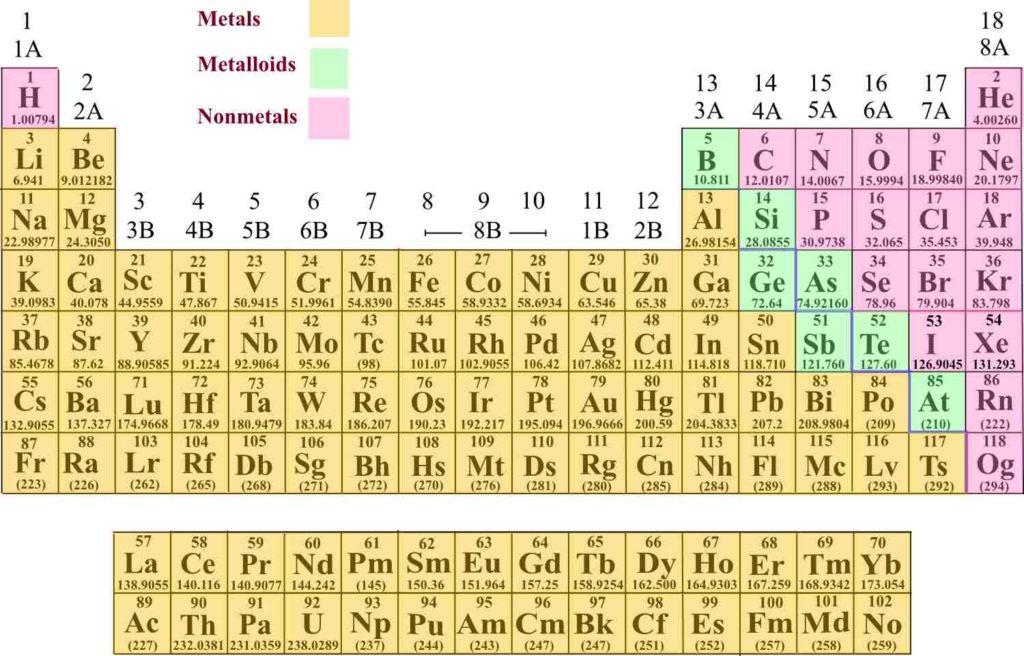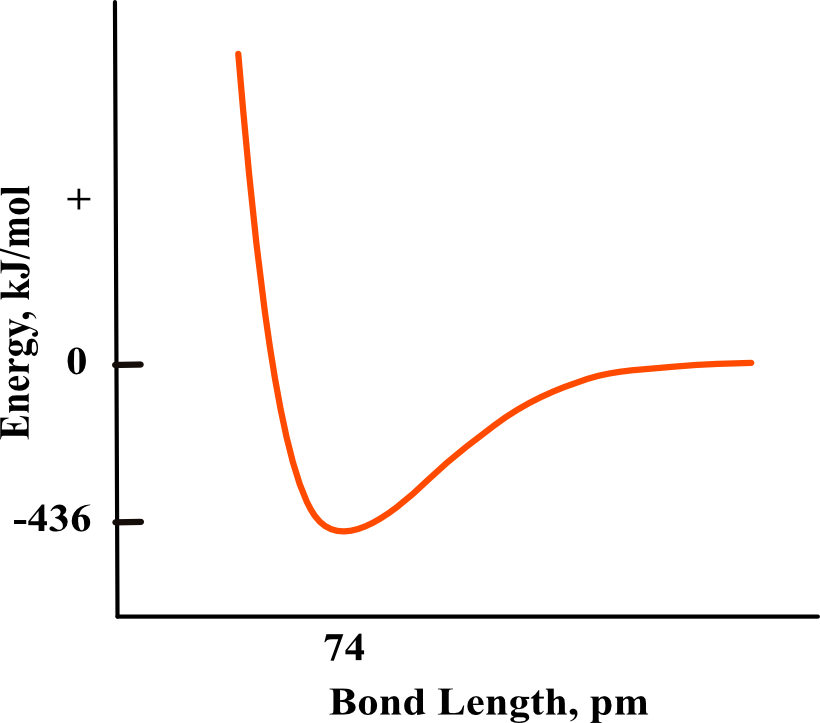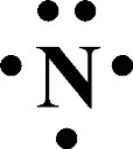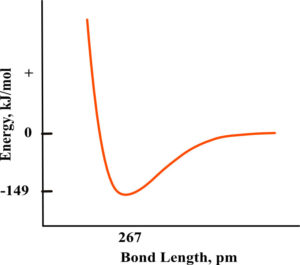Before talking about how atoms bond together, it is important to understand why atoms bond together, and in more general terms why chemistry happens. Why does a chlorine atom (Cl) become a chloride ion (Cl–)? Why do two hydrogen atoms (H) come together to form a diatomic molecule of hydrogen (H2)? Why do copper atoms (Cu) conduct electricity and nitrogen atoms (N) do not? By the same token, chemical elements and compounds will normally react to form new products that are lower in energy than the starting materials. A thorough discussion on this matter is part of the focus of an advanced chemistry course such as physical chemistry, but at this level of chemistry, we will introduce some of the basic concepts.
As previously stated regarding main group elements, the noble gases (Group 8A), have little if any reactivity because these atoms have a very stable valence electron configuration. The first rule to remember is that normally most chemical phenomena occur for the sake of stability. Atoms may gain or lose electrons to become more stable. In other words, they become lower energy species. We have already discussed the formation of ionic bonds in a previous study guide. In this section, we will see how atoms other than noble gases can obtain this configuration through the formation of covalent bonds.
A covalent bond is a bond formed due to the sharing of electrons. The electrons are not transferred from one atom to the other as in ionic bonds, but the electrons are shared between the atoms.
When two atoms come together, there are electron-electron repulsions, electron-nucleus attractions, and nucleus-nucleus repulsions to take into account. For example, when two hydrogen atoms get close enough together, the electrons will repel one another, the 2 nuclei will repel, but the nuclei will attract the electrons. If the attractive forces are greater than the repulsive forces a covalent bond will form. In the figure below, the potential energy is at a minimum at the point 74 pm and -436 kJ/mol. This is the optimal distance that is required for the two hydrogen atoms to form a covalent bond. The H2 molecule has a bond length of 74 pm. If the atoms are too far apart, the potential energy is zero, and a bond cannot form. If the atoms are too close together, the repulsive forces are much stronger and the potential energy is at a maximum, and a bond will not form. When the atoms are at an optimal distance, for hydrogen this is a bond length of 74 pm, the covalent bond will form.
The outermost electrons of an atom, the valence electrons, are responsible for chemical activity between atoms, ions, and molecules. For this reason it is very important that we know the electron configuration of the individual atoms and ions. Recall the arrangement of electrons in an atom of nitrogen:
N: 1s22s22p3
The valence shell of the nitrogen atom is the second shell (2s22p3), which contains a total of five electrons available for forming covalent bonds or lone pairs. Lone pairs of electrons, also called nonbonding electrons, are unshared electron pairs. As part of the chemistry language, we learn to represent both chemicals and chemical reactions symbolically. Because chemists are, for the most part, only interested in the outermost electrons, a notation called Lewis dot symbols is used. It consists of the atom’s symbol from the periodic table and the valence electrons surrounding the symbol. Looking at the electron configuration for nitrogen, we see two shells containing electrons. The first shell, represented by 1s2 contains two electrons in the s subshell. The second shell, the outermost shell, represented as 2s22p3 contains five electrons: two electrons in the s-subshell and three electrons in the p-subshell. This results in a total of five electrons in the valence shell. We already know the electrons in the outermost shell are referred to as valence electrons. Using Lewis dot structure, we place the five valence electrons around the nitrogen symbol: Once 4 electrons are placed around the chemical symbol, the remaining electrons are paired.
When placing the valence electrons around a main group atom, follow the method shown for the second period atoms:
Exercises
Exercise 1. Write electron dot symbols for barium, antimony, phosphorous, and bromine.
Exercise 2. Write electron dot symbols for Rb and Te.
Exercise 3. Use the figure below to determine the bond length, in pm, for I2.
Exercise 4. Use the figure to determine the energy released when two iodine atoms form a covalent bond.
Check Solutions/Answers to Exercises
Back to Covalent Bonds and Lewis Dot Structures
Back to General Chemistry 1 Study Guides
Back to Home Page





